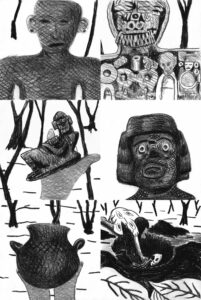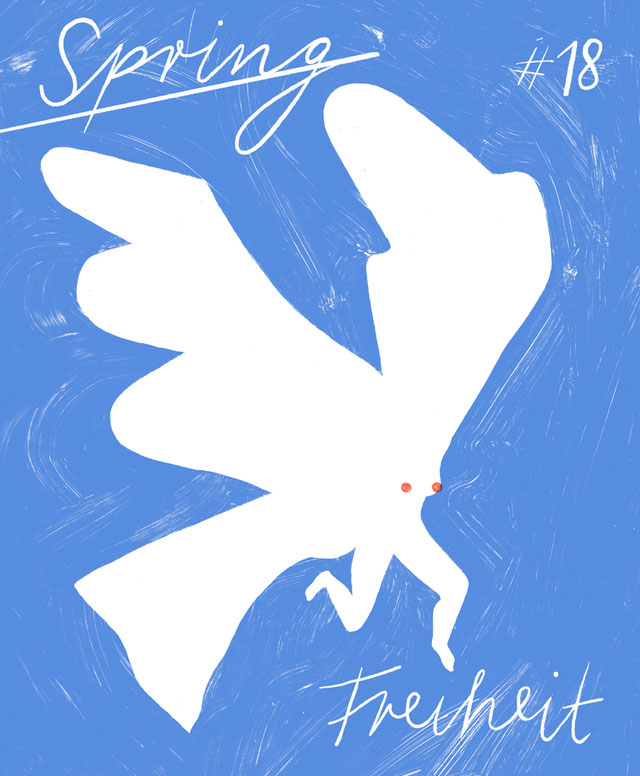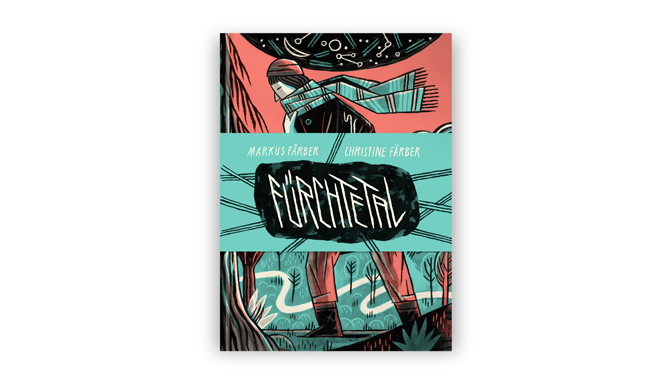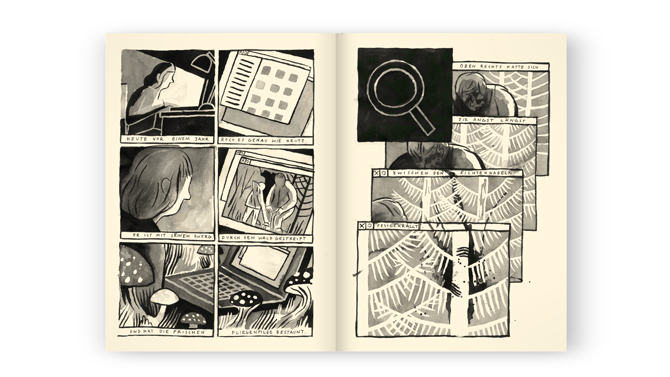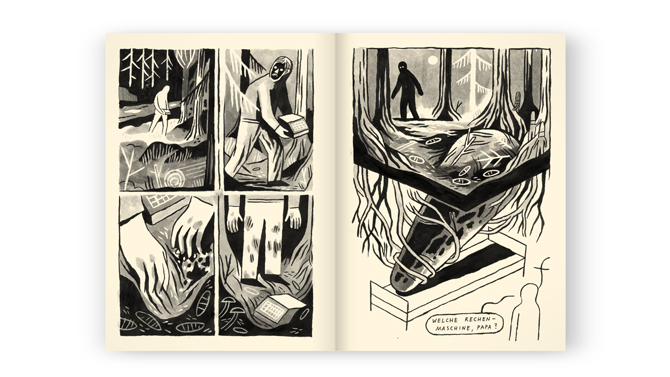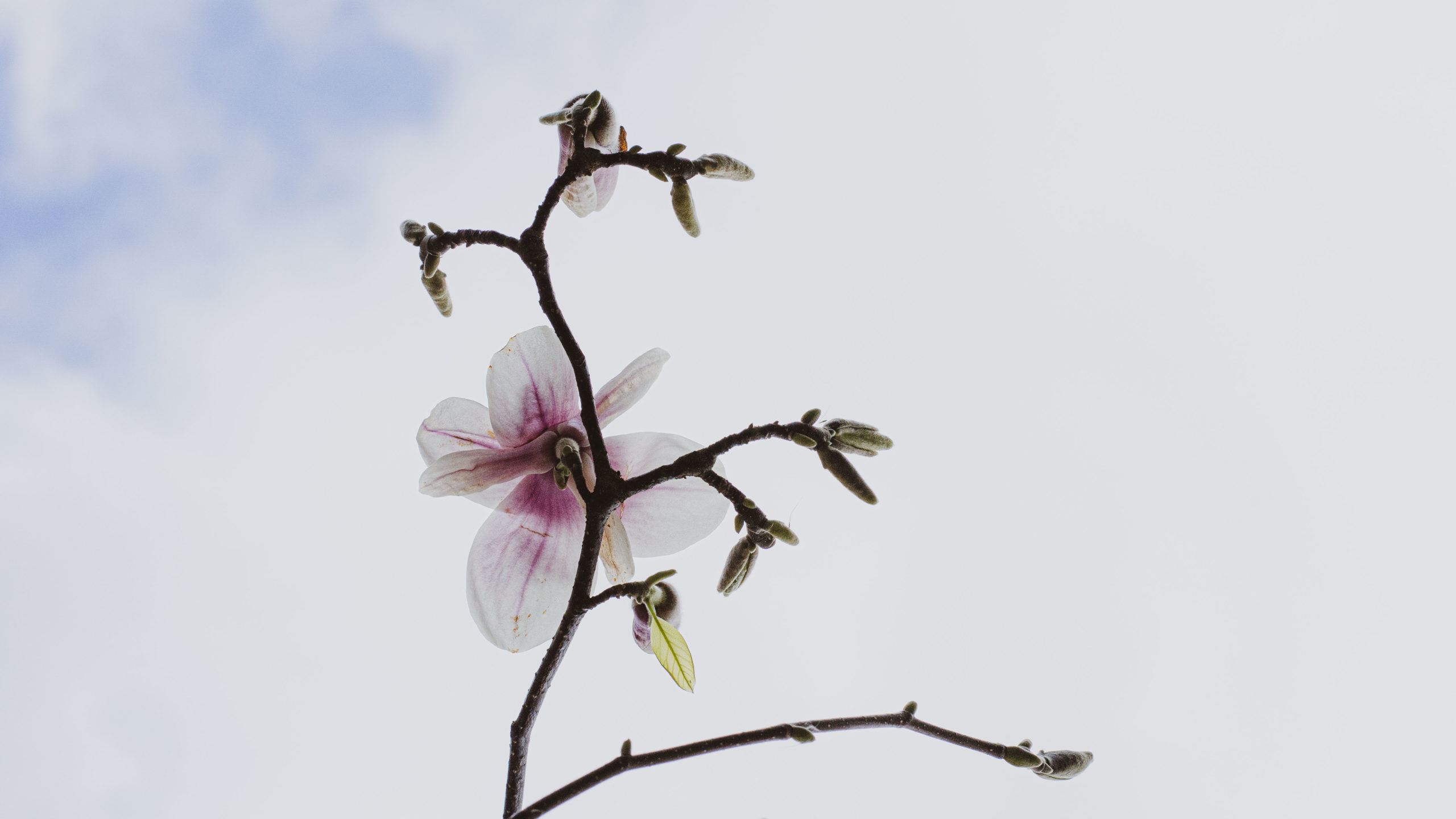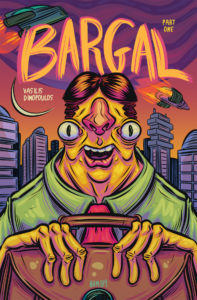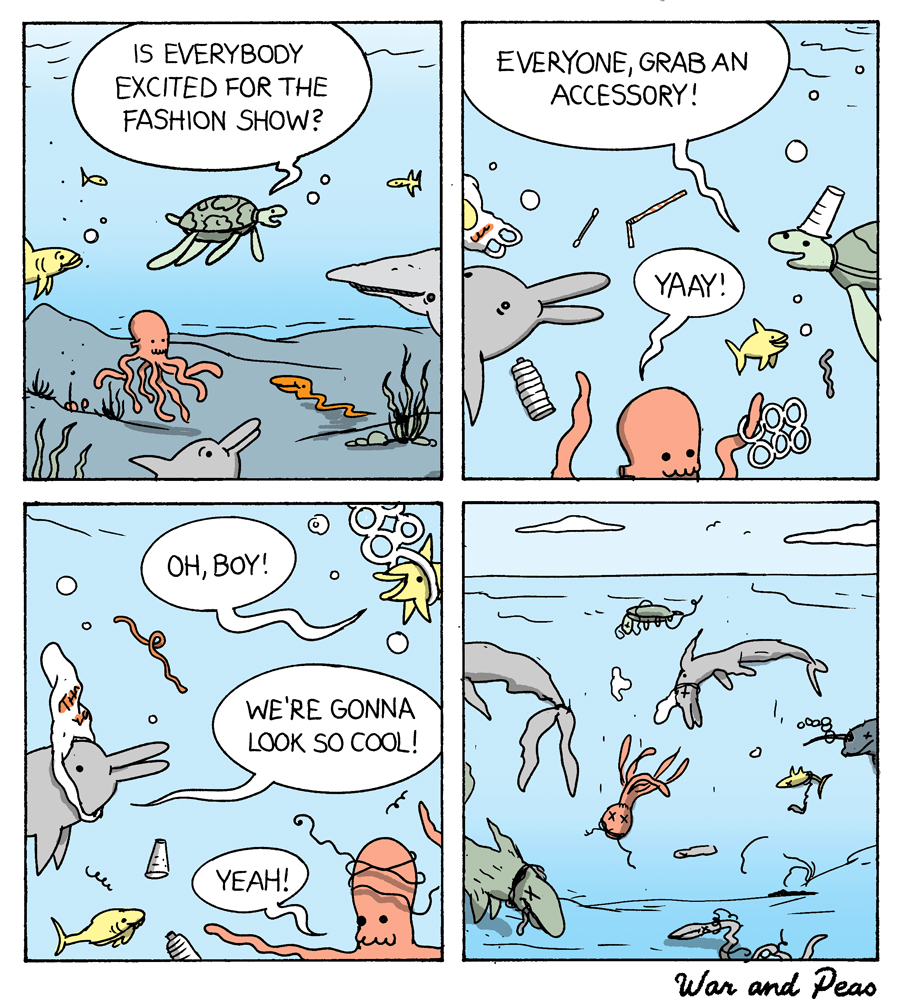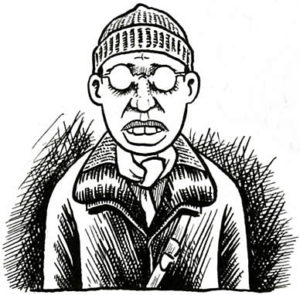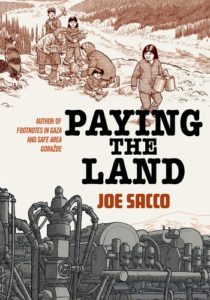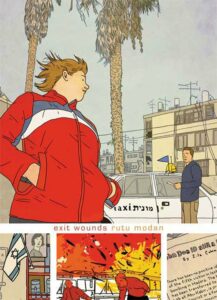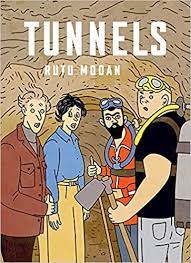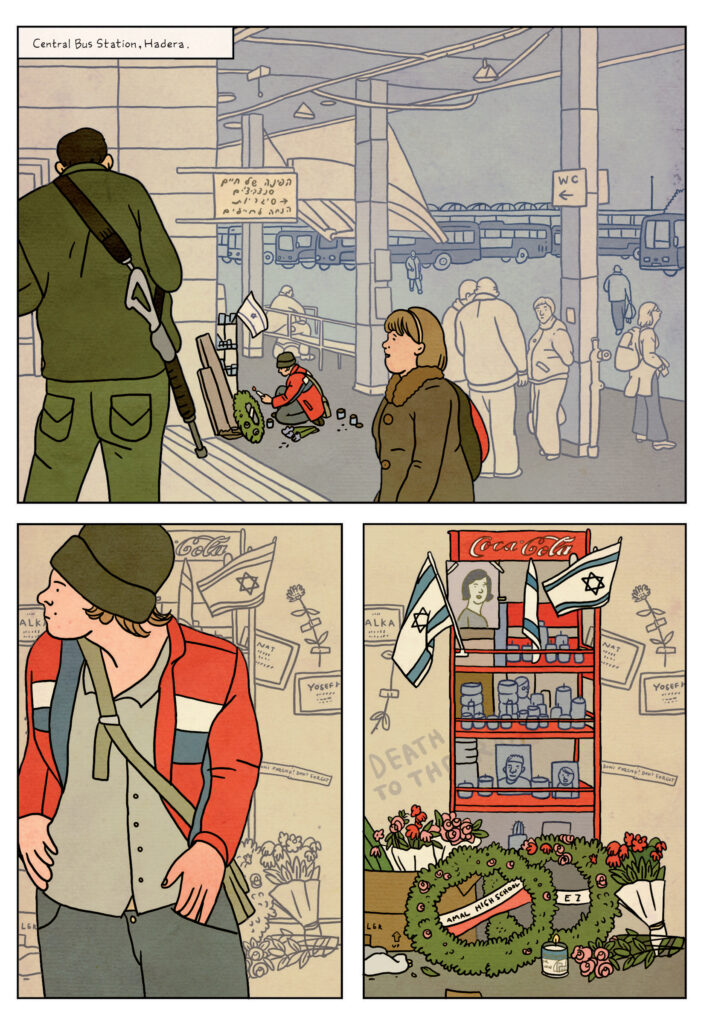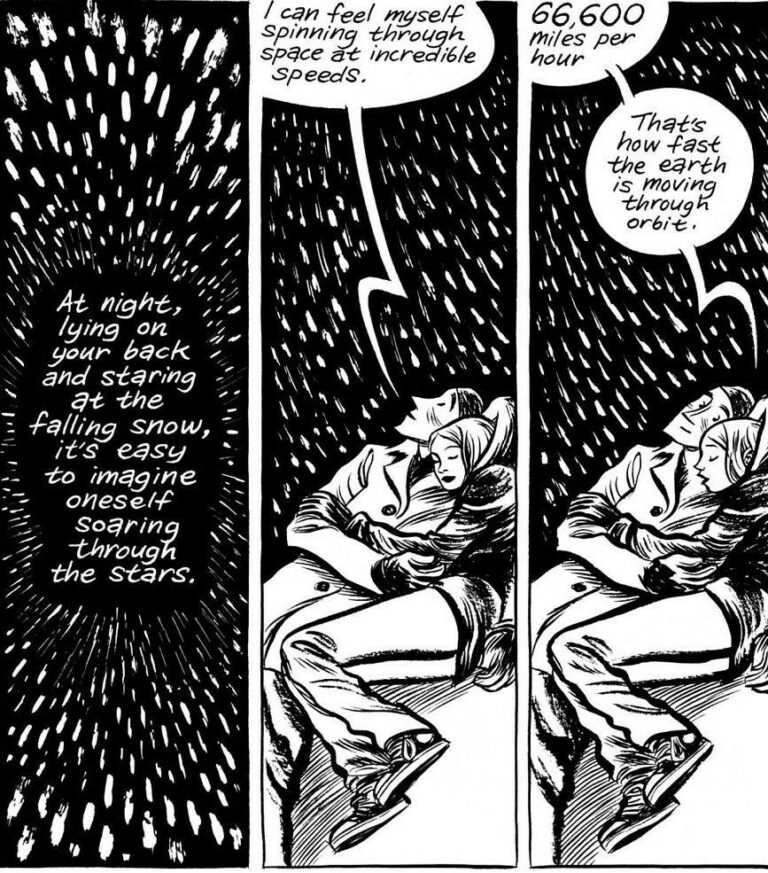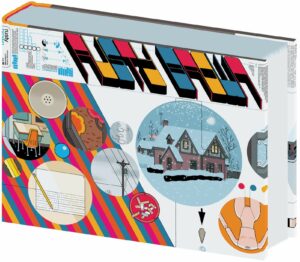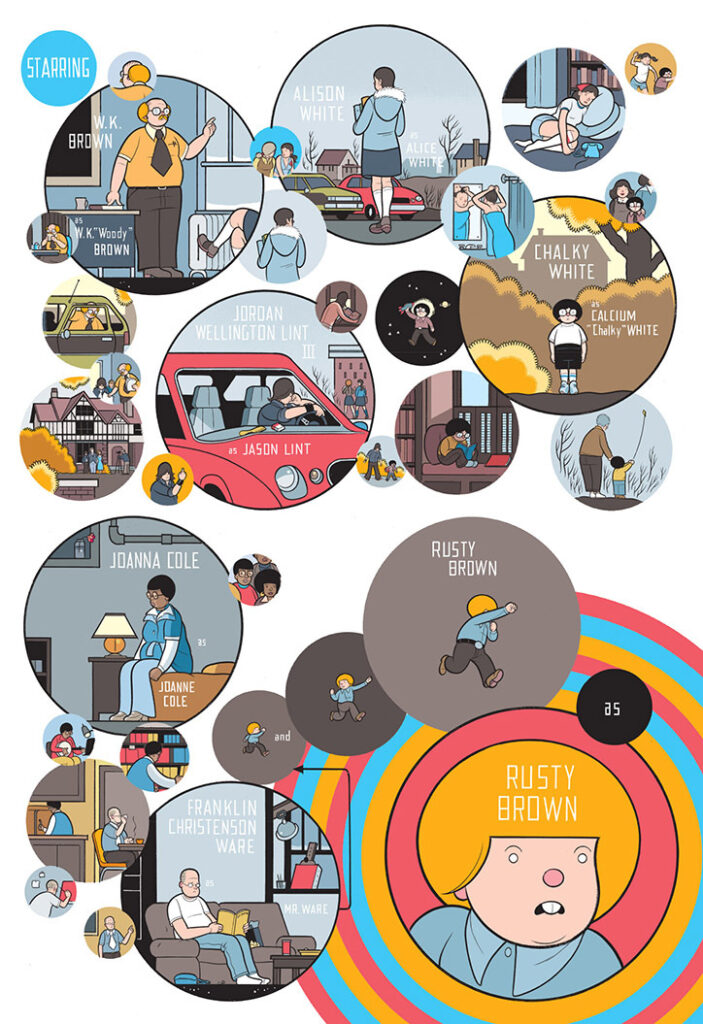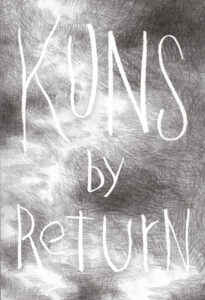
Leo (L): When I first read Kuns by Return, I was captivated by its images which evoke a sense of mystery and foreboding. The enigma of the comic starts with the title which almost seems like an incomplete spelling of “Kunst”, the German noun for “art”. How did you come up with the title and how was the idea for the comic born?
Jazael (J): The questions of how to translate the untranslatable, or how to show the misunderstandings generated by the post-colonial position are interesting to us, while new forms of enclosures emerge. We were inspired by a funny anecdote where Diego referred to “Kunst” as “Kuns” and decided to integrate this subtly provocative comment into the book. It is a bad translation, and remains like that as a title that honors a position to defend not the mistake but the appropriation of language by “the others”, the creolization, the codigofagocitation of the language with subversive means, which means to bring a certain hegemonic language little by little into bankruptcy. We come to the German context with this mistranslation as a possibility of dialogue.
L: The comic is drawn by three people: you, Waysatta and DiegoTeo. How can one picture this collaboration? What is Cráter Invertido, the name mentioned on the back cover?
J: The collaboration is done in a sequential way. Crater Invertido has been working collectively since 2012 as a cooperative. This means that members and participants have encouraged collaborations that take shape in events, collective drawings, situations, publications, radio programmes, study groups. Sometimes intertwined. DiegoTeo, Waysatta and I are starting members of this process working together before crater was founded, collaborations started in 2009. Drawing is the space we share to grow together our collective thought and practice. Cooperativa Crater invertido has been doing collective artworks since even before that name appeared. We have participated in events such as Venice Biennale (2015), Jakarta Biennale (2015), Gwangju Biennale (2016), Leopold Museum Wien (2017), amongst others. Last year we were invited to BAK by Sven Lutticken to do a collaboration for Prospection magazine, where we did for the first time a collective comic “Huesos y Sangre Coagulada”. It came together with a text by Mariana Botey. From there we decided that for documenta fifteen, as part of Arts Collaboratory AC School, we wanted to continue this method. We got together every week to discuss and draw, even virtually. We tried to think of a narrative that is flexible to the drawing and not necessarily coming from a script. We juggled ideas of stories, but then the drawings showed the path. In the case of the comic Kuns by Return collaborative process, the participation with Rogelio Vazquez, coordinator of the edition, was meaningful and insightful, it would not have happened without his interest in this collective mission.
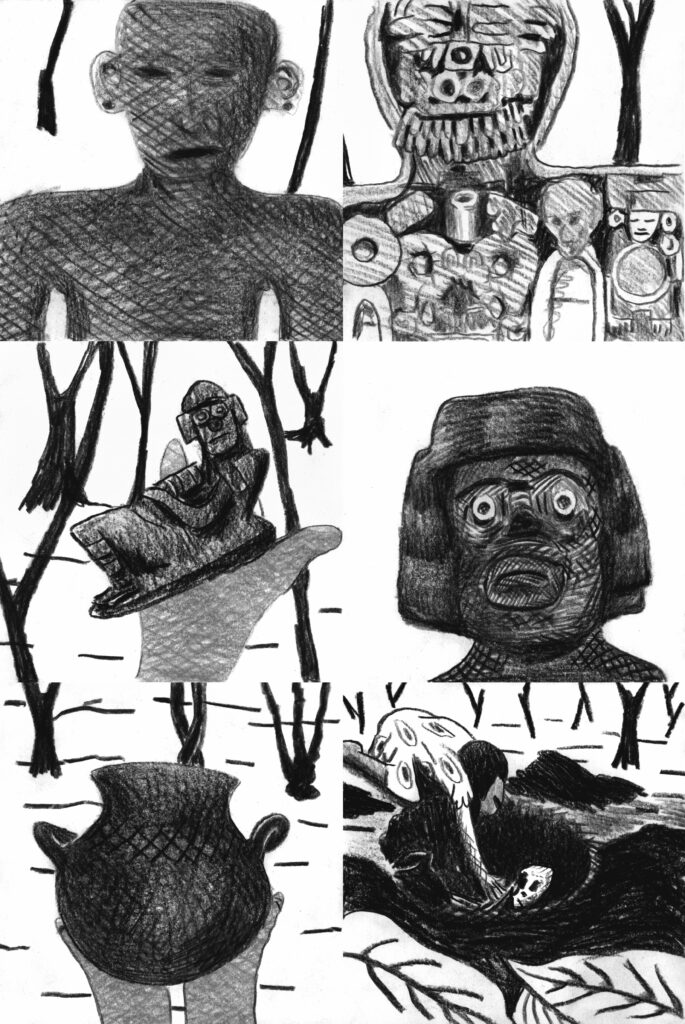
L: Kuns by Return features no written language apart from the title and the Spanish chapter headings. However, there are still passages that had made me feel “lost in translation” as a European reader. One of them was in the opening chapter in which the protagonist unearths old bones and pottery, and we are shown ancient sculptures. Should readers know anything about Mexico’s past and present to better understand the book?
J: The intention behind having no written text except the titles of the chapters in fact has to do with enhancing the experience of mystery of the narrative. Also going back to prehispanic imaginary, codex and sacred books were pictographic. In that sense, the image was the text. We propose to insist on how to engage with images as the text and vice versa. It also avoids the problem of “translating” but not totally legible, because everyone, depending on their own story and context will read differently. It is not necessarily to relativize, also to open. Even us who draw it feel “lost in translation” amongst us, sometimes the drawing of the other is unexpected, and we work with that, improvising the drawing as well as the reading, Also, insisting that images are open even to illegibility.
L: The great French cartoonist Marc-Antoine Mathieu once said that the magic of comics as an art form lies in the concept of masquerade, and that masks, like the simplified features of beloved cartoon characters, can cast a spell on viewers. What role do masks play for “Kuns” and for your work as artists in general?
J: Faces are singularities, and what happens when the face is missing? The cartoons that are dear to their audience, mostly feature a very synthetic style. The openness of the line to represent a face gives a sense of belonging. In that sense we are interested in masks and faces as a place to bring the possibility of the reader to engage with the drawings.
Waysatta (W): The masks, the misspoken, the incomplete, what means one thing and at the same time many others, the open, the ghost, what is read between the lines, the opaque, the ruin, the unfinished, the otherness, the allegories, the baroque, mestizaje, the presentiment, the uncertainty, the oneiric, the whisper, the ambiguous, the archeological piece, the humming, the road trip, the perpetual “to be continued”….are some of the recurrent concepts, images and behaviors that motivate our collective artistic and organizational practices.
We try to embrace this throughout the comic as a way to tell our stories and for others to resonate and signify the images from their own narratives and contexts.
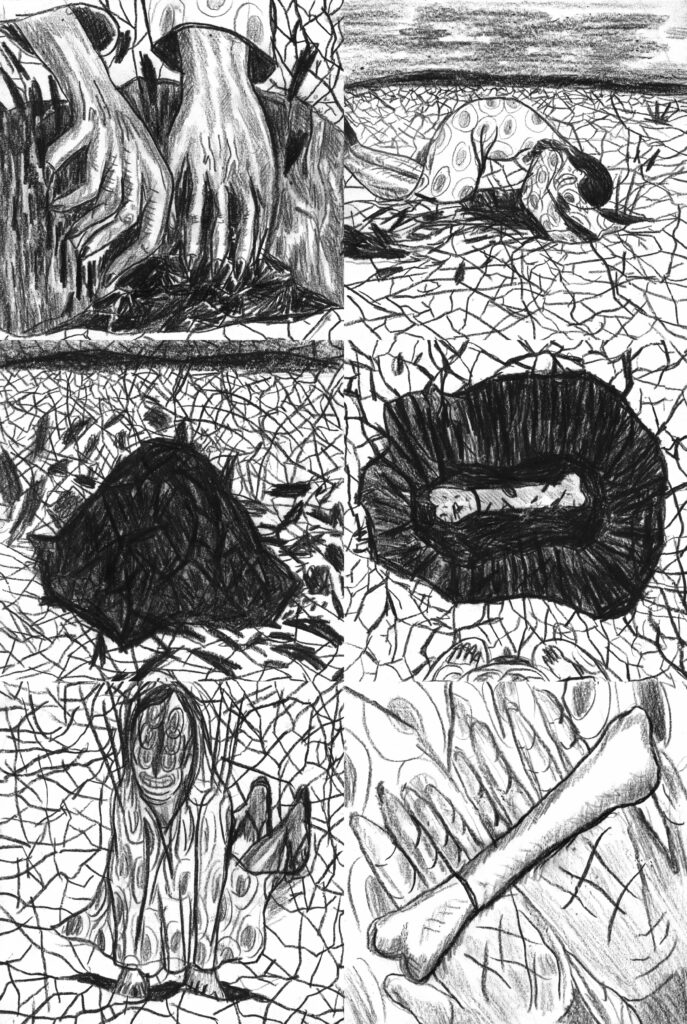
L: One of the themes of the work is urbanity which becomes the stage for both anxiety, alienation and self-discovery. What role do urban environments play for your own artistic practice?
J: It depends on which of us is speaking. For some of us, the urban space is the place where we also materialize our imagination through graffiti and drawing-in-the-space. Workshops where walks and drifts through the city are part of our collective practices and imaginariums. Not only the urban space but its tensions with rurality is something that is very important to question, as to push forward with our art that defies the urban-carereal- complex domination over people, nature and of course imagination.
L: For readers who are not familiar with the Mexican comics scene, do you have any book recommendations? Who should we have on our radar?
J: Gatosaurio, Joc-Doc ediciones, Vacaciones de Trabajo 😉 y muchxs más…
L: One of the themes I observed in Kuns is the search for and celebration of togetherness. I am thinking of a beautiful sequence in which one of the main characters draws faces of his friends onto the walls of an underwater cave. Collectivity is also the theme of this year’s documenta. Was this a deliberate intersection?
J: Kuns by Return is a book about togetherness, coming together and finding allyship and friendship through a common journey, even though this journey has no end.
W: There are many references of diverse forms of collective organization that cross and nourish our own practices as a collective. We share, resonate and learn from/with processes of struggle and resistance that come from different artistic collectivities, social movements, autonomous communities, diverse assembly processes, urban and rural cooperatives, parties, and so on.
Insisting on dialoguing, from differences and affinity, with this diversity of experiences of collective organization has been a compass for our own imaginative practices and self-organization within Cráter Invertido.
Undoubtedly, one of the most powerful learning and unlearning experiences has been being part of the Arts Collaboratory network where we have been able to practice, together with different collectivities from the global south, processes of self-organization, solidarity, common economies and collective study from a transterritorial dimension, under ethical principles that try to transgress and question normalized, internalized and imposed hegemonic logics.
For several years Ruangrupa has constituted, built and actively nurtures, together with other collectivities, the Arts Collaboratory ecosystem.
From the ecosystems of which we are part of and with which we share, collectivity is a vital practice and togetherness is an act of resistance and survival that we honor from dignity.
In this sense it is a shared celebration. We recognize “Kuns by Return” as part of this collective celebration.
L: Thank you for your time!
